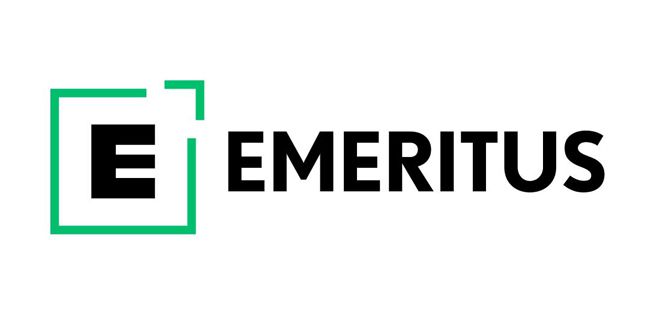Are you an instructional designer who’s feeling a little stuck in your current job? Or maybe you’re an aspiring instructional designer looking to break into the field and start building a lucrative career where you’re consistently climbing up the ladder. Either way, you’ll need a roadmap to get you there.
As someone who’s worked in the industry for nearly 20 years, I can tell you an instructional design career path can go in a lot of different directions. From working in academia to designing corporate training programs, the possibilities are endless. In fact, a current search for instructional design jobs on Indeed finds nearly 10,000 open positions of all types. It’s important to understand your skills, interests, and goals so you can decide which direction is right for you.
In the guide below, I’ll take a look at some of the different career paths and pivots an instructional designer can take and discuss some practical tips to help you reach your goals.
What Sectors Can Instructional Designers Work In?
As an instructional designer, you have the opportunity to work in a variety of sectors, such as:
- Education: Instructional design is often used in education settings to create courses and curriculums for schools, universities, and other learning institutions.
- Corporate Training: Many organizations use instructional design to create training programs for their employees.
- Government: Instructional designers are sought-after in the government sector, where they develop courses and training materials for public servants.
- Nonprofits & Charities: Instructional designers can help nonprofits and charities spread awareness by creating content that expands knowledge or promotes certain causes.
- Medical: Instructional designers are increasingly being used in the medical industry to create things like training modules for healthcare professionals.
- Technology: Instructional design can be used to create technical documents, software tutorials, and other materials related to technology products and services.
- Public Speaking & Consulting: As an instructional designer, you may also have the opportunity to speak at conferences or offer consulting services in your field of expertise.
The type of work you might be tasked with as an instructional designer can vary greatly depending on the organization you work for.
One aspect that plays a big role in dictating your responsibilities is the mission and purpose of the organization. For instance, if you are working in a corporate environment, you may find yourself working on training programs aimed at improving employee performance or growing sales.
On the other hand, if you are working in a university setting, you may be tasked with creating courses and curriculums that help students learn more effectively. This will likely involve collaborating with faculty members to enhance their curriculum, whether it be for classroom or remote learning.
Job Opportunities for Instructional Designers
Now that you have an idea of the different industries you can work in as an instructional designer, let’s take a look at some of the specific types of jobs you can pursue.
- Instructional Designer: An instructional designer oversees the entire design process from conception to implementation. This may involve conducting needs analysis, designing course materials, and developing assessments.
- Course Developer: A course developer is responsible for designing, creating, and delivering educational content in a variety of formats. This may involve developing online courses, creating video tutorials, or writing technical documents.
- eLearning Curriculum Developer: A curriculum developer works with faculty members to create eLearning course curriculums. This may involve designing lesson plans, selecting resources, and developing assessment materials.
- Distance Educational Specialist: A distance education specialist typically works with other university staff members in the development, implementation, and maintenance of the institution’s online learning programs.
- Instructional Technology Specialist: An instructional technology specialist helps organizations develop and implement learning technologies to improve performance and efficiency. They must have an understanding of the organization’s mission and purpose, as well as the ability to create solutions that help them reach their goals.
- Instructional Systems Designer: An instructional systems designer is responsible for designing instructional materials and programs to meet the needs of learners. This may involve developing courses, creating learning activities, or providing instructional support.
- Training & Development Manager: A training and development manager is responsible for creating and managing training programs in an organization. This may involve developing courses, writing job aids, or providing technical support to staff members.
- Learning Experience Designer: A learning experience designer is responsible for creating interactive learning experiences that engage and motivate learners. They must have the ability to create engaging content, utilize multimedia technologies, and apply best practices in instructional design.
- Learning & Development Specialist: A learning and development specialist assists organizations in creating and executing training programs with the goal of enhancing employee productivity and efficiency. The specialist’s responsibilities include identifying training needs, creating training programs, preparing teaching materials, providing training sessions, and assessing training program results.
- Project Manager: As a project manager, you will be responsible for overseeing the instructional design process. This may involve managing budgets, timelines, and personnel in order to ensure that projects are on track and meeting goals.
- Chief Learning Officer: A chief learning officer is responsible for leading the organization’s strategic efforts in education and training. They must be able to create effective learning strategies, manage resources, and develop innovative solutions.
These are just a few of the many job opportunities available to instructional designers. As the demand for educational content continues to grow, so does the need for talented professionals who can create and deliver engaging instruction. With the right skills and qualifications, instructional designers can make a meaningful contribution to any organization in a variety of ways.
Moving Ahead in Your Instructional Design Career Path
If you’re looking to progress in your instructional design career, there are a few steps you can take to stand out from the crowd.
Gain New Skills
 Emeritus Professional Instructional Design Certificate | Online Certificate Course
Emeritus Professional Instructional Design Certificate | Online Certificate Course
Gain firsthand expertise in instructional design principles and methodologies through this unique Professional Certificate program. Create impactful learning solutions and improve people's ability to learn.
The next class kicks off on October 22, 2024, so don't miss your chance to enroll now! Take advantage of early bird discounts leading up to the kickoff date:
20% off until September 3
15% off until September 24
10% off until October 15
First, focus on continuing your education and developing your ID skills. Consider taking courses or workshops related to instructional design, as well as learning about new technologies that can make instruction more engaging and effective.
For instructional designers, keeping up with emerging educational technologies and techniques is essential for staying relevant. Over the 20 years I’ve been in the industry, I’ve seen how things evolve over time. What was relevant a few years ago may no longer be relevant today.
Fortunately, Emeritus’ Professional Certificate in Instructional Design program offers a comprehensive solution for those looking to build their skills and progress in their field.
With a curriculum designed to meet the unique needs of instructional designers, this program provides students with cutting-edge insights and practical hands-on experience. Whether you’re a seasoned professional or just starting out in the field, Emeritus’ Professional Certificate in Instructional Design program has everything you need to take your career to the next level.
In just five months, you’ll learn foundational theories, best practices, and practical tips for designing better eLearning experiences.
Click here to learn more about the program and request a free brochure.
Build Your Network
Another way to progress in your instructional design career is to build a strong professional network.
I’ve found that joining industry organizations, attending conferences and events, and connecting with colleagues can help you stay up-to-date on new trends and developments in the field.
Additionally, networking can open the doors to new opportunities for advancement.
By connecting with professionals who are further along in their careers, you can get advice and gain valuable insight into the hiring process.
Create a Portfolio
Don’t forget to share your accomplishments and show off your skills by publishing an instructional design portfolio online. I’m constantly preaching the importance of having a good portfolio to my fellow instructional designers.
Create a portfolio website that showcases your work or make sure to include relevant projects on your resume. This will help demonstrate to potential employers that you have the knowledge and experience necessary to create engaging instruction.
Practice Effective Communication
Develop strong communication skills, both verbal and written, to interact effectively with stakeholders, clients, and learners. This includes being able to explain complex concepts in a clear and concise manner.
Have a Clear Career Goal in Mind
Finally, it’s important to have a clear goal in mind when it comes to your instructional design career.
Do you want to move up in the current organization or look for opportunities outside? Do you plan on specializing in a particular field of instructional design or focus on continuing education?
Having a plan – and the dedication to carry it out – will help you create and follow the ideal instructional design career path for your goals.
Useful Resources
- Instructional Designer Job Description
- Instructional Design Masters Programs
- Instructional Design Certificate Programs
- Instructional Design Bootcamps
- How to Write an Instructional Design Cover Letter
- Instructional Design Career Path & Roadmap
- Common Instructional Designer Interview Questions
- Where to Find Instructional Design Jobs
- How to Become a Freelance Instructional Designer
- Instructional Design Salary Statistics
- Instructional Design Resume Tips
- Key Instructional Design Principles
- How to Create an Instructional Design Document
The Bottom Line
Instructional design is a growing field that offers numerous opportunities for professionals to make an impact.
Whether you’re looking for a new job or want to progress in your existing role, following the tips outlined above can help take your career path to the next level.
With the right skills and qualifications, instructional designers can make a fantastic living in a number of different industries.
So, take the time to develop your skills and create a plan for success – and you’ll be sure to find success in the field of instructional design.
Have any questions about this guide to the instructional design career path? Let me know by commenting below.
- Elevating Your Virtual Presence: Why EMEET’s SmartCam S800 Stands Out in Modern Communication - 06/04/2025
- US Teachers Will Spend $3.35 Billion of Their Own Money on Classroom Expenses in 2025-25 School Year - 06/04/2025
- Report: Leveraging AI Tools Could Help US Teachers Avoid $43.4 Billion of Unpaid Overtime Work - 06/04/2025


